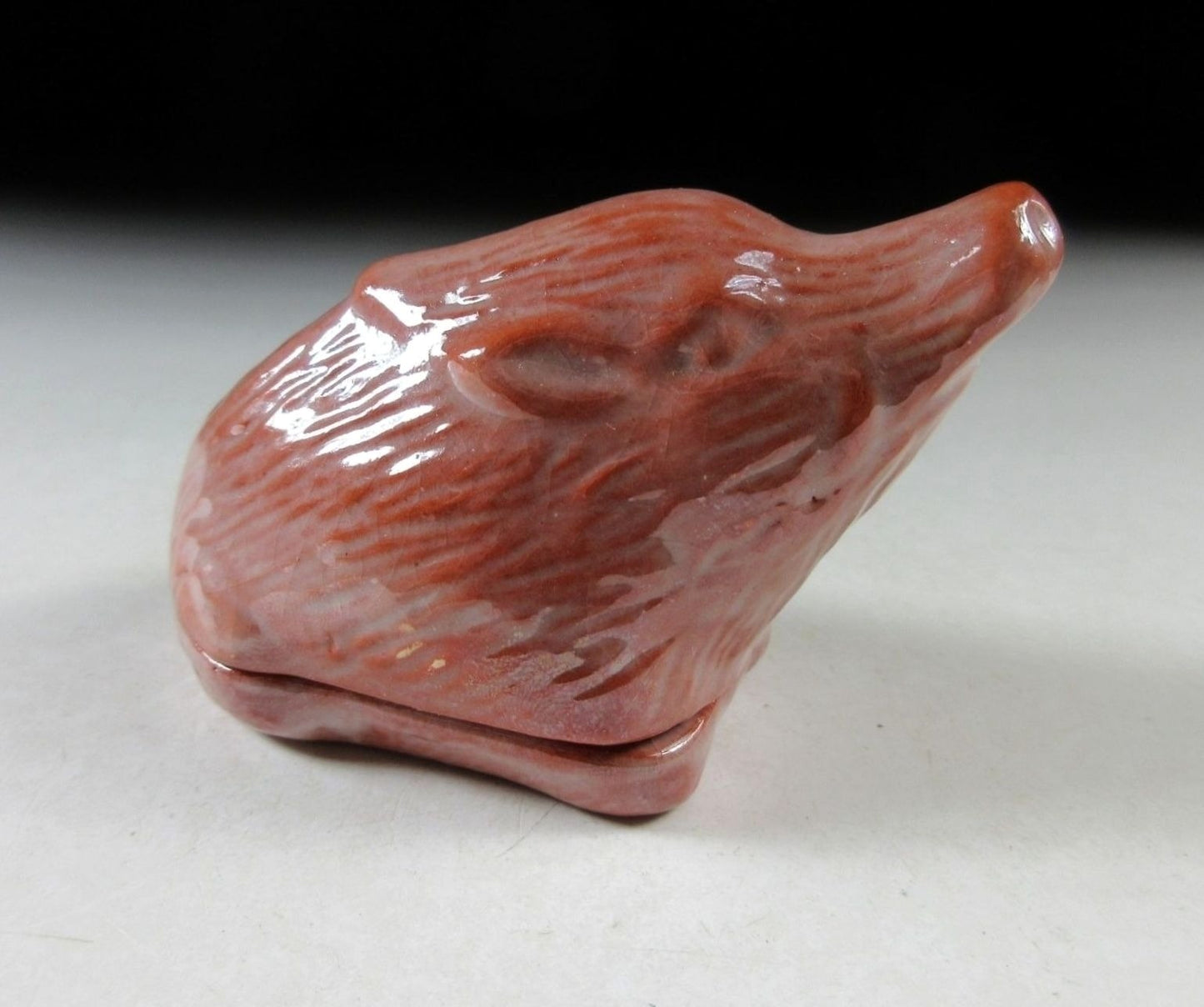Kominka Zakka
Yoshimura Rakunyu III Year of the Boar Kogo
Yoshimura Rakunyu III Year of the Boar Kogo
Couldn't load pickup availability
*SHIPPING OPTIONS VARY DEPENDING ON THE DESTINATION, PLEASE SCROLL TO THE END OF THIS LISTING FOR MORE DETAILS.
This listing is for a raku kogo made around 20 years ago by noted potter, Yoshimura Rakunyu III. It is moulded to resemble a boar, and is a low fired aka-raku piece. It is coated in semi-transparent white glaze and has a nice smooth finish. Its size and shape is suitable for holding both woodchip and kneaded incense, although pottery kogo are typically used for kneaded incense during the cooler months. This piece was possibly made to commemorate the Year of the Boar back in 1995. The stamp of the potter can be found on the bottom and it comes with its original paper storage box.
Yoshimura Rakunyu III (b.1954) is the eldest son of second-generation master of the Rakunyu family kiln located in the Higashiyama district in Kyoto. He studied at the Kyoto Prefecture Ceramic Training School, and then studied under his father Yoshimura Rakunyu II (1912—1991). In 1986 he participated in a group exhibition in Kyoto, and in 1989 he established Rakunyu Gama. In 1993 he participated in a Kiyomizu-ware Exhibition in Paris, and in 2001 he was certified as a Traditional Craftsman of Kyoto Prefecture. In 2004 he held several solo exhibitions nationwide at Daimaru Department store, and in 2006 he held a solo exhibition at Fukuoka in Kyushu. In 2011 was certified as a Kyoto city Traditional Craftsman. **Fellow sellers, this information was researched by Kominka Zakka and CANNOT be used in your own listings.
Raku ware refers to low-fired ceramic ware first made in Kyoto by the Raku Family, its origins going as far back as the 16th century. It is traditionally characterised by being hand shaped rather than thrown. Raku is typically delicate, lightweight, and earthy to the touch. Aka (red) raku bowls are fired at 800 degrees, whilst the kuro (black) bowls can be fired up to 1200 degrees. The glaze for black bowls is made from crushed black stones retrieved from the Kamogawa River in Kyoto. Red bowls are coloured by adding translucent glaze over a pinkish clay body. When using raku bowls you should always wipe well with a warm cloth before use. It is possible to cause small cracks if you suddenly add boiling water.
Kogo are for holding incense during the tea ceremony. Kogo vary depending on the season. In summer wooden kogo are used for holding chips of incense wood, and in winter ceramic kogo are used for holding kneaded incense intended for the hearth. During the tea ceremony, incense is added to the charcoal fire during the charcoal-laying procedure.
Sizes
Paper Box: H.6.2cm (2.4”) x 9.2cm (3.6”) x 5.3cm (2”)
Kogo: H.4.5cm (1.7”) x L.7.6cm (2.9”) x 3.8cm (1.4”) across
Condition
It’s in very good condition aside from a surface imperfection on the side, also the paper box is discoloured on the interior.
THESE ARE SHIPPING ESTIMATES BASED ON THE CURRENT GLOBAL SITUATION
**Germany, France, Greece, Spain, Poland, Austria, Slovakia, Lithuania, Slovenia: NO SHIPPING. Very strict and expensive packaging laws in place and we are not licensed to send products to these countries. We have no plan to register at this time because the process is in some cases very expensive and complicated, plus each country has its own set of regulations and application process.
**USA, UK, Canada, Australia, New Zealand, Switzerland, Norway: Airmail Small Packet (approx. 15-28 days). Combined shipping available up to 2kgs for Airmail Small Packet (please send us a message).
**Asia: Airmail Small Packet (approx. 15-21 days). Combined shipping available up to 2kgs for Airmail Small Packet (please send us a message).
**Central Asia, Middle East, South Africa, Brazil, Mexico: EMS Express 10-15 days.
**Russia: No shipping methods available.
Share














